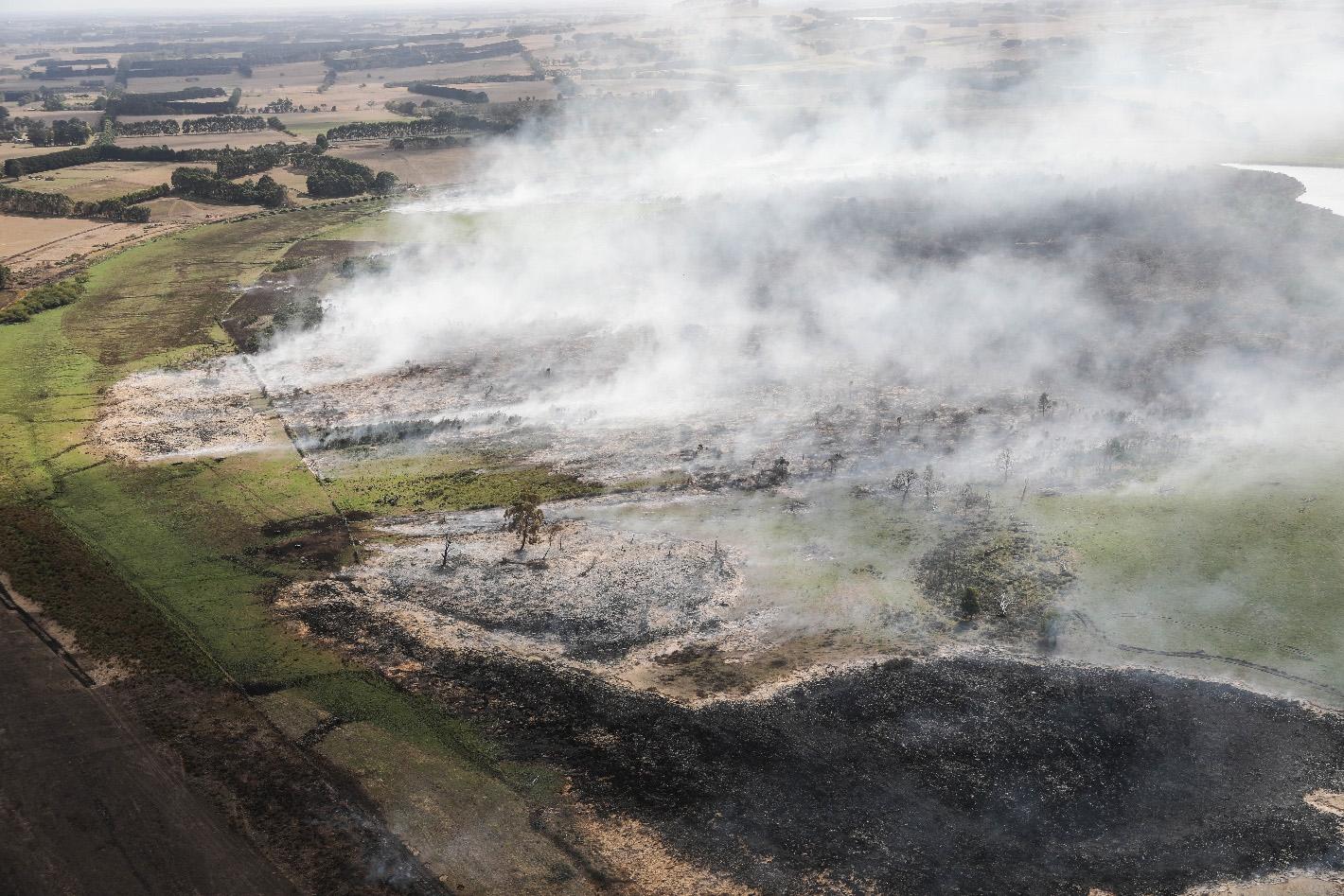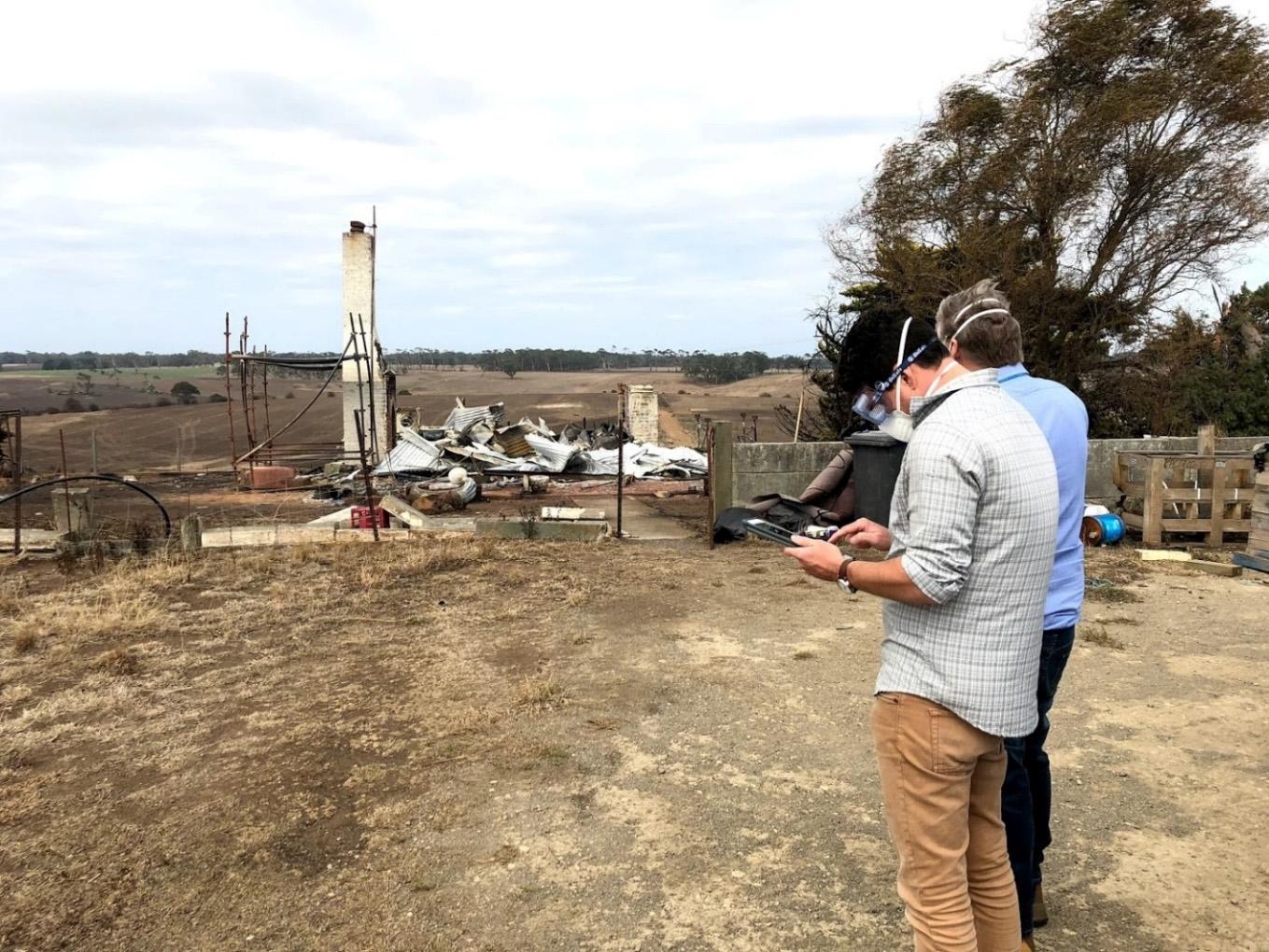
6 minute read
Observations, findings and recommendations
Observation 1
The Inspector-General for Emergency Management observes that a majority of stakeholders engaged in the review identified the opportunity for more streamlined and simplified initial impact assessment through identification and focus on core data requirements.
Observation 2
The Inspector-General for Emergency Management observes that effective communication about impact assessment across the organisations and with community members would alleviate some of the frustration felt by the community. This could help to establish a schedule of impact assessment activities that reduce burden on affected communities, reduce duplication and keep the community informed regarding the purpose and progress of impact assessment and recovery.
Observation 3
The Inspector-General for Emergency Management observes that the use of the resilient recovery model for consequence management and the recovery environments for impact assessment is causing confusion in the sector and creates a barrier to further integration of these initiatives.
Finding 1
The Inspector-General for Emergency Management finds that there are differences in expectations across the sector around the timelines required to provide accurate and complete data during and after emergencies.
Finding 2
The Inspector-General for Emergency Management finds the specific purposes of impact assessment are not clearly articulated and understood across the sector.
Finding 3
The Inspector-General for Emergency Management finds that there is a lack of clarity in the sector regarding the relevance, timing and activities involved in the three stages of impact assessment.
Finding 4
The Inspector-General for Emergency Management finds that the resilience index under development (at the time of writing) is ambitious and exceeds the original requirement for baseline data, extending beyond the emergency management sector into health, social, economic, political and environmental portfolios.
Finding 5
The Inspector-General for Emergency Management finds there is a lack of understanding of organisational ownership and accountabilities for impact assessment across the sector.
Finding 6
The Inspector-General for Emergency Management finds privacy and confidentiality concerns are limiting information sharing across organisations during emergencies, resulting in poor impact assessment and community recovery outcomes.
Finding 7
The Inspector-General for Emergency Management finds that: • there is a high level of capability for initial impact assessment (IIA) in Class 1 emergencies particularly among responder agencies. • capability for secondary impact assessment and IIA in Class 2 emergencies is less consistent across the sector, but individual organisations were well placed to collect and analyse the impact assessment data relevant to their recovery responsibilities and business as usual requirements.
Finding 8
The Inspector-General for Emergency Management finds that local knowledge is not consistently leveraged for impact assessment purposes.
Finding 9
The Inspector-General for Emergency Management finds that there is significant work being conducted by Emergency Management Victoria to resolve impact assessment data collection, collation, coordination and communication challenges.
Finding 10
The Inspector-General for Emergency Management (IGEM) finds the sector values consequence management as an approach that fosters: consideration of the wider ramifications of an emergency event, including appropriate actions and the coordination of broader sector organisations and partners a way to think about and adapt to non-traditional and unanticipated emergencies. IGEM finds that the consequence management approach is diffusing broadly across the sector, but with different understandings and applications across and between local, regional and state tiers.
Finding 11
The Inspector-General for Emergency Management finds the value of the consequence management products is inhibited by: difficulty with interpreting and use due to length and presentation of content the quality of inputs through use of inappropriate and unsubstantiated data and/or intelligence misalignment between the content of products and key decision-maker needs lack of validation and evaluation of products to continuously improve the approach.
Finding 12
The Inspector-General for Emergency Management finds consequence management products do not align with audience and decision-making requirements.
Finding 13
The Inspector-General for Emergency Management finds that: across all tiers stakeholders identified that a lack of scope clarity and a lack of coordination between and across tiers results in duplication and unintended negative consequences. roles and responsibilities of the Emergency Management Commissioner and sector organisations were unclear.
for regional and local tiers, limited capacity and resources were identified as a barrier to applying an effective consequence management approach.
Finding 14
The Inspector-General for Emergency Management finds that consequence management is an important approach to facilitate dynamic and adaptive decision-making. However, there are aspects of consequence management that still require further refinement. A key priority is to establish clear demarcations between Emergency Management Victoria’s consequence management roles and responsibilities and those of other sector organisations. Additionally, coordination is required between and across all tiers.
Finding 15
The Inspector-General for Emergency Management finds that impact assessment and consequence management provide complementary intelligence that can be further integrated to inform response, relief and recovery activities.
Recommendation 1
The Inspector-General for Emergency Management (IGEM) recommends that Emergency Management Victoria, in liaison with producers and users of impact assessment data, coordinate a thorough analysis of the fundamental purposes of impact assessment. This activity should aim to produce, publish and share the following outputs: a needs analysis for impact assessment that describes the specific purposes of impact assessment and identifies the data, metrics and timeframes required to adequately serve these purposes sets of core impact data that should be prioritised for urgent collection in Class 1 and Class 2 emergencies agreed reporting metrics including consideration of the use of ranges or caveats where timelines for urgent and specific data are unrealistic updated impact assessment guidelines and related emergency management manuals for all emergencies that outline the data collection, reporting and sharing responsibilities of all organisations across the sector agreed reporting metrics to inform relief and recovery (both short and long-term) efforts information-sharing guidelines through consideration of personal and nonpersonal data sharing across all tiers in both Class 1 and Class 2 emergencies. IGEM considers this activity to be a priority that will rationalise ongoing and future activities aimed to produce an end-to-end impact assessment process.
Recommendation 2
The Inspector-General for Emergency Management recommends that Emergency Management Victoria (EMV) engage relevant organisations to continue to leverage current impact assessment capacity and capability. EMV should coordinate this work through existing impact assessment working groups to: clarify current capability and capacity for impact assessment (including built, social, economic and natural impacts) identify opportunities to better leverage existing agency and department expertise and resources to greatest effect
identify current systems in use and the technical requirements and constraints to be addressed to transition to an integrated portal for collection, collation and reporting of data.
Recommendation 3
The Inspector-General for Emergency Management recommends that Emergency Management Victoria, with the support of Local Government Victoria, update, publish and share relevant impact assessment plans, operating procedures, manuals and impact assessment guidelines to ensure Incident Controllers or Incident Management Teams formally consult relevant local personnel. Appropriate local representation should be identified during pre-season activities and/or in the initial stages of an emergency through a brief consultation with local government emergency management personnel. Local representation should extend from response through to recovery to better align emergency management with community requirements.
Recommendation 4
The Inspector-General for Emergency Management recommends that Emergency Management Victoria continues to lead discussions with the sector to resolve their respective roles, responsibilities and scope for consequence management and associated triggers and escalation points. These discussions should result in the production, publication and sharing of a consequence management framework which considers the following: purpose and use of consequence management guidance for the sector on the consequence management approach and application across the sector opportunities to further strengthen the coordination of consequence management across and between tiers improvement of consequence management products to ensure relevance, appropriateness and effectiveness
additional mechanisms to build the capacity of the sector to undertake consequence management appropriate local and regional representation in consequence management.






